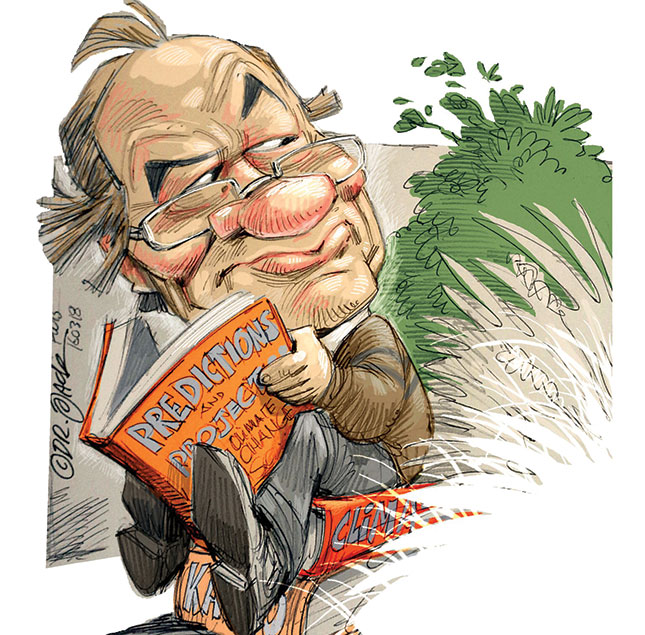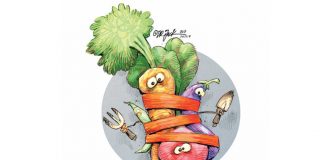
The first national analysis of the potential climate change impact on South Africa’s diverse flora and fauna was carried out in the late 1990s. In it, it was projected that the western half of the country would become much hotter and drier, and the succulent Karoo biome, and the northern half of the fynbos biome, would all but disappear.
These predictions were so catastrophic that the potential climate change impact on biodiversity began to be explored worldwide.
Actual changes
Two decades later, South African scientists have produced a report summarising actual changes in these biomes. Using photographic evidence as well as repeated surveys, researchers have documented major changes in the country’s ecosystems. But the changes are not what were expected.
The succulent Karoo has remained remarkably stable and fynbos shows little sign of dramatic changes, except for serious invasion by alien trees. Instead, the most significant changes have taken place in the summer rainfall biomes, grassland and savannas.
Early in the previous century, much of South Africa consisted of open veld with vast grassy landscapes. Today, trees and shrubs are thickening up on savannas, and dense thicket is invading grassland. Many of our landscapes are no longer open grassy vistas, but are covered with trees. These changes are widespread, from dry regions to the high rainfall mountain catchments, and are on such a large scale that they appear to threaten the future of grasslands.
Loss of grass reduces livestock productivity, changes biodiversity of these systems, impinges on the tourist experience in game reserves (animals are less visible in dense bush), and reduces water yield from streams and rivers. On the other hand, there are potential benefits: trees can be used for biomass burning or other purposes.
There have been other ecological changes too, but while tall shrubs have spread along stream banks and koppies in the Karoo, the major change, ironically, is the spread of grassland into the eastern Karoo shrubland. The grass invasion is so complete in some areas that grass-fuelled fires are burning in places which never experienced burning before.
This grass invasion of shrubland is directly opposed to the predictions made by John Acocks, an influential ecologist in the 1950s, who argued that Karoo shrubs were invading grassland, eating into grazing resources because of overgrazing. The westward spread of grassland is also the exact opposite of the predictions made in the 1990s study.
Accurate future predictions
What was wrong with these analyses and how can future projections be more accurate?
The problem may lie with the incorrect assumption that climate controls the distribution of life, with all biomes neatly arranged according to rainfall and temperature. This is not so in South Africa, or most of Africa.
In a country as dry as South Africa, profound differences in vegetation can be seen across a boundary fence, with no change in climate at all. In our region, climate merely sets the scene for potential vegetation. Actual vegetation depends on the specific burn history and the activities of large mammals.
Extensive research shows the great importance of fire in South Africa’s higher rainfall regions, and mammal herbivory in lower rainfall regions, in shaping our vegetation. Fire has been suppressed as roads, cropland and urban settlements have fragmented the landscape. Rich African fauna, from elephant to migratory herds of springbok, has been replaced by cattle, goats and sheep. This means that the land user is a major factor in changing terrestrial ecosystems.
Warming can now be detected in temperature records from across South Africa, although there are not yet widespread detectable trends in rainfall.
The CO2 factor
What is also changing, is atmospheric carbon dioxide (CO2), the invisible hand in global climate change. Since the early 20th century, CO2, the major greenhouse gas contributing to global warming, has increased from about 300 parts per million (ppm) to 400ppm, mostly due to fossil fuel use. These are higher concentrations than have been experienced by plants for at least a million years.
CO2 has direct and indirect effects on plant growth. Plants use less water as CO2 increases, so for the same rainfall, plants should grow more or have longer growing seasons. Plants are also capturing more carbon through photosynthesis than before. Glasshouse studies on savanna trees have shown striking responses from some of our most common tree species contributing to large- scale woody thickening.
Seedlings today produce larger root systems, packed with starch reserves, and produce larger thorns and more chemical defences as CO2 increases. Trees establish as seedlings more readily, survive fire and browsing as saplings, and grow more readily than in the past. Model simulations and long-term experiments support the importance of CO2 in contributing to the expansion of woody plants at the expense of grasses.
So, we have a new global change driver, particularly important in open ecosystems that have the potential to form forests, but have been prevented from doing so by fire, herbivory and the people managing the land. In this new, high-level CO2 world, it will be far harder to maintain open grassy systems than in the past. Traditional management practices may become ineffective.
Fortunately, we can influence future land cover change by developing new approaches to applying the familiar tools of mammal herbivory and fire. With our developing understanding of land cover change and its causes, we should be better able to develop management methods to direct trajectories of change to those most desirable for particular purposes.
With regard to projecting future ecosystem changes, climate-based projections will get it wrong. In this part of the world, one has to factor in land management and the direct and indirect effects of CO2.”
For full report, see “Change is in the air. Ecological trends and their drivers in South Africa” by Nicola Stevens, William Bond, Timm Hoffman and Guy Midgley. Visit www.saeon.ac.za.












